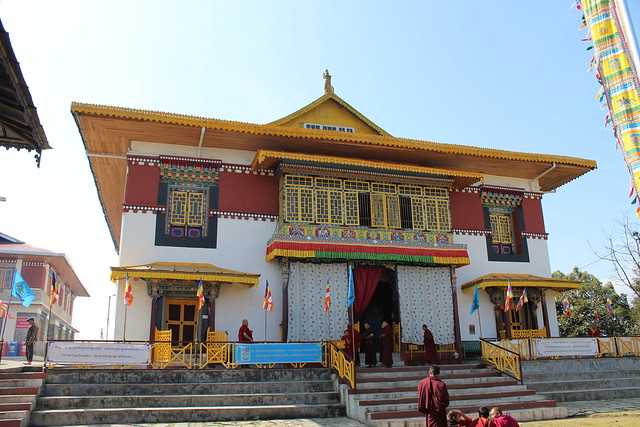Pemayangtse Monastery
Label : Top Attraction
Tags : Buddhist Temple
Timings : 9:00 AM - 6:00 PM
Time Required : 1-2 hrs
Entry Fee : INR 20
Pemayangtse Monastery, West Sikkim Overview
Pemayangtse Monastery is a highly revered Buddhist Monastery situated at Pemayangtse, in the Pelling region of Sikkim. One of the oldest monasteries of the state, it stands tall on a hilltop overlooking the historical Rabdentse ruins, the former capital of the Kingdom of Sikkim. Pemayangtse translates to 'perfect, sublime lotus' and is said to represent one of the four networks of nerves (vessels) in the human body. Dedicated to Padmasambhava (Guru Rinpoche who revived Buddhism in Tibet), the striking feature of this monastery are the statues of him and his consorts.
Being one of the oldest monasteries in the state, the Pemayangtse Monastery has served as part of the Buddhist pilgrimage circuit in Sikkim for centuries since its completion in 1705. The monastery attends to the Nyingma Order (oldest one of the four schools) of Tibetan Buddhism. The monks here are recognized by the red hats they wear and are chosen amongst the Bhutias of Sikkim! An elevation of 2085 meters (6840 feet) above the sea level provides an iconic and eye-pleasing site for the ancient monastery. Pemayangtse Monastery also serves as the starting point of the popular Dzongri trek route. Pretty sights of the Kangchenjunga massif that includes five eight-thousander peaks, which have been described as Five Treasures of Snow, are visible from the monastery.
Pemayangtse Monastery Highlights
1. Cham Festival at Pemayangtse Monastery

Read More on Pemayangtse Monastery
History and Significance
Architecture of Pemayangtse Monastery

Source
The first floor of the monastery houses ancient scrolls, excellent paintings, well-crafted idols and sculptures while the stand out attraction is the seven-tiered wooden painting on the top floor of the monastery, depicting Guru Rinpoche's heavenly palace - "Santopalri". A feat that was designed and constructed over a period of 5 years by Dungzin Rinpoche.
Best Time to Visit
How to reach Pemayangtse Monastery
-
Air: The nearest Airport to Pelling is Bagdogra Airport, Siliguri, which is a four hour drive from Pelling. You can take a taxi or bus from here to reach Pelling. You can find taxis in Pelling to go see the Pemayangtse monastery.
-
Rail: The nearest Railway Station from Pelling is Jalpaiguri Railway Station, which is at a distance of 170 Kms from Pelling. It is well connected to major cities like Chennai, New Delhi, Howrah, Alipur and Darjeeling through Guwahati Express, Ndls Bgp Express, Mas Njp Express and Dbrt Rajdhani. You can find taxis in Pelling to go see the Pemayangtse monastery.
-
Road: Pelling is well connected with the other cities of Sikkim via Sikkim State Road Transport Corporation (SSRTC) and some private travel services. Buses are available to get to Pelling. You can find taxis in Pelling to go see the Pemayangtse monastery.